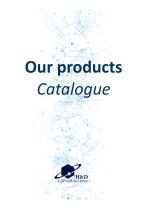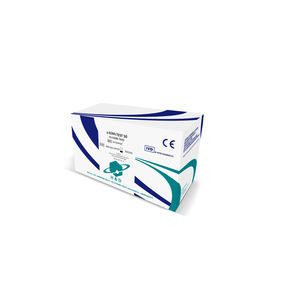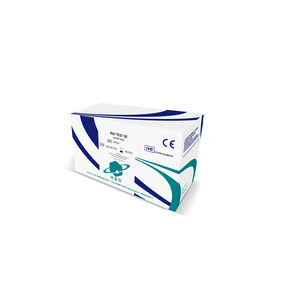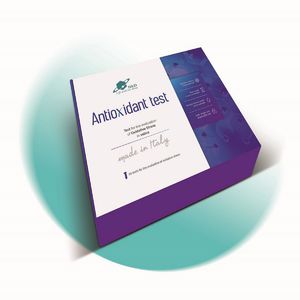
Research test kit SATfor oxidative stressfor animalstotal antioxidant status

Add to favorites
Compare this product
Characteristics
- Applications
- for research, for oxidative stress
- Patient type
- for animals
- Tested parameter
- total antioxidant status
- Sample type
- laboratory, saliva
- Analysis mode
- photometric
- Result display time
1 min
- Sample volume
0.01 ml
(0.00034 US fl oz)
Description
As the antioxidant power of saliva is the first defence against the development of an oxidative stress condition, its determination is particularly useful.
A substance with antioxidant capacity is defined chemically as a molecule with reducing properties. Reducing properties are not an absolute but a relative characteristic, so the choice of reference molecule becomes important.
If this molecule is too oxidising, the antioxidant power of the saliva will be overestimated because molecules that under physiological conditions do not usually have antioxidant power will also react. On the contrary, choosing an oxidant that is too mild will lead to an underestimation for the opposite reason. It was considered appropriate to choose ferric ion as the reference molecule because it is present under physiological conditions and therefore a test based on it provides a realistic estimate of the antioxidant power.
The antioxidant power of saliva provides an indication of physiological mechanisms and oral health (J Oral Pathol Med . 2012, 41(9):649-661.). It is recognised that a lowering of the antioxidant defences of the oral cavity correlates with the onset of inflammatory diseases, e.g. periodontitis. Excessive antioxidant power, on the other hand, is a recognised risk factor for the development of caries.
The SAT test is a photometric test that can be used in outpatient, research and pharmacy settings on a dedicated system (FRAS5 and Mini SAT) or in any laboratory with a photometer. The test is performed on 10 µl of saliva in just one minute. SAT test results are expressed as µmol/l ascorbic acid equivalents.
VIDEO
Catalogs
Related Searches
- Assay kit
- Blood assay kit
- Serum assay kit
- Plasma assay kit
- Optical assay kit
- Research assay kit
- Laboratory detection kit
- Cell assay kit
- Animal assay kit
- Oral fluid test kit
- POC reader
- Blood POC reader
- Colorimetric assay kit
- Portable POC reader
- Laboratory POC reader
- Metal test kit
- POC plasma analyzer
- Optical POC analyzer
- Lead detection kit
- Inflammatory disease POCT analyzer
*Prices are pre-tax. They exclude delivery charges and customs duties and do not include additional charges for installation or activation options. Prices are indicative only and may vary by country, with changes to the cost of raw materials and exchange rates.







